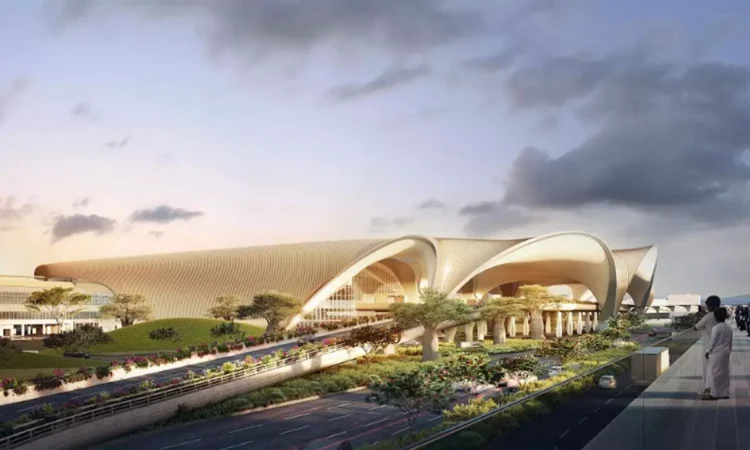Mumbai, the financial center of India, is entering a new phase in aviation with the upcoming launch of the Navi Mumbai International Airport (NMIA) at the end of September. This development positions Mumbai to adopt a dual-airport model similar to those in Dubai, London, and New York. The existing Chhatrapati Shivaji Maharaj International Airport (CSMIA), which serves over 50 million passengers each year, has been operating under significant capacity constraints. With limited expansion options and a single runway nearing its limits, the establishment of NMIA addresses the urgent need for a second international airport in Mumbai. This strategy follows global trends by redistributing traffic between two airports to alleviate congestion, mitigate operational risks, and expand choices for airlines and routes.
A comprehensive multimodal transport system will eventually link NMIA and CSMIA, ensuring that Mumbai’s infrastructure reflects the sophistication of major world capitals. The first phase of NMIA will feature Terminal 1, designed to accommodate 20 million passengers annually for both domestic and international travel. The terminal’s design, inspired by the lotus flower, includes a striking roof structure, abundant natural light, and sustainable building practices, symbolizing a fusion of cultural heritage and modern aspirations. Inside, passengers will find next-generation check-in areas with automated kiosks and biometric verification, world-class baggage claim systems touted as the fastest globally, spacious waiting lounges, and streamlined security lines equipped with advanced scanning technology.
The broader master plan aims for up to four terminals by 2032, collectively handling 90 million passengers per year, with facilities for flexible gate management, automated boarding, and efficient digital processing to enhance the travel experience during peak times. Beyond the terminals, NMIA will feature an integrated aero city that includes retail, hospitality, and logistics hubs, transforming the airport into a self-sustaining economic engine. The airport aims to prioritize passenger experience with open terminal interiors, intuitive navigation, art installations, and greenery, as well as lounges offering views of the runway. Dining options will highlight Mumbai’s famous street food and international cuisine, while retail spaces will feature both luxury brands and local shops.
Amenities like complimentary Wi-Fi, family lounges, business pods, and digital navigation aids will cater to various traveler segments, from corporate guests to tourists. In addition to passenger services, NMIA is being developed as a significant cargo hub, initially capable of handling 800,000 tonnes annually, with plans for future expansion. This capacity is vital for supporting Mumbai’s pharmaceutical, perishable goods, and e-commerce supply chains. Once fully operational, NMIA will boast India’s largest general aviation terminal, featuring around 75 business jet stands and a heliport for both scheduled and unscheduled services.
Additionally, the airport will include a fuel farm, advanced maintenance facilities, and a state-of-the-art Air Traffic Control (ATC) tower, with a temporary structure to be replaced by a permanent one within seven years, showcasing a commitment to efficiency, safety, and future-oriented planning. The pairing of NMIA and CSMIA positions Mumbai alongside the world’s most advanced multi-airport systems. For instance, Dubai International Airport (DXB) currently serves over 90 million passengers annually, with plans for Al Maktoum International to eventually accommodate more than 120 million. Similarly, London’s airports collectively manage over 180 million passengers, while New York’s airports handle around 130 million.
By 2032, with NMIA’s capacity of 90 million combined with CSMIA’s, Mumbai is projected to serve between 150 and 160 million passengers annually, aligning with these global standards. This strategy not only enhances aviation capacity but also stimulates broader economic impacts, including job creation, tourism growth, corporate investment, and real estate development along the Navi Mumbai corridor. Airlines are anticipated to respond favorably, with domestic airlines like IndiGo and Akasa Air already committed to establishing operations at the new airport, while prominent international carriers may be attracted by India’s growing aviation market and the advanced facilities offered at this technology-driven airport. Together, these developments will bolster Mumbai’s status as India’s premier global aviation hub.
The inauguration of NMIA signifies more than just an additional runway; it represents India’s most ambitious airport project aimed at resolving long-standing capacity issues while embodying the nation’s infrastructure aspirations. It promises quicker, smarter, and more enjoyable travel experiences for passengers and opens new avenues for connectivity and growth for businesses. For Mumbai, it assures a position alongside global cities like Dubai, London, and New York as one of the world’s leading twin-airport systems. As the opening date approaches, NMIA is poised to transform India’s aviation landscape, setting new benchmarks for operational efficiency, sustainability, and passenger satisfaction.


